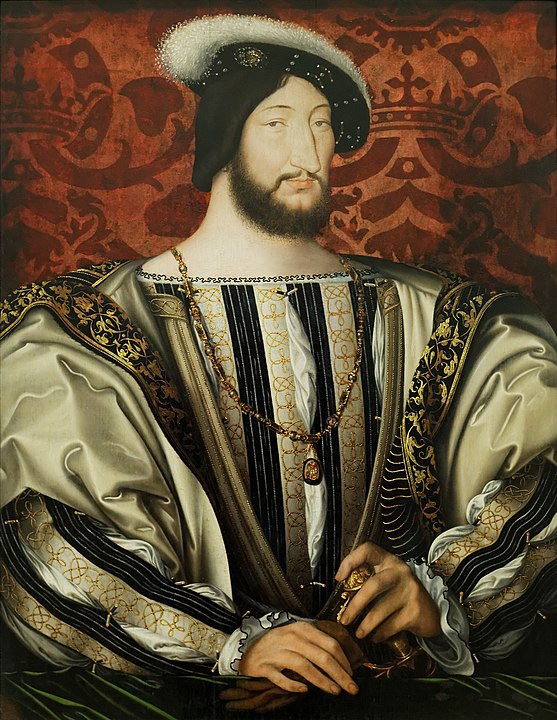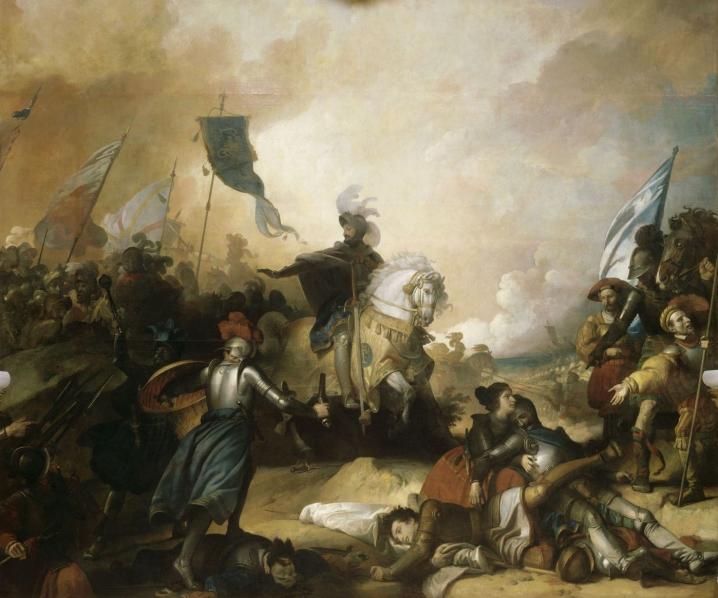In northern Italy, on September 13 and 14, 1515, Francis I achieved a notable victory by defeating a contingent of Swiss mercenaries in the Battle of Marignano. This triumph bestowed upon the young king of France not only great favor but also a heroic reputation. He was even knighted by the Lord of Bayard on the battlefield. The year 1515 frequently emerges in French historical conversations, sometimes with the inclusion of Marignano. However, it is crucial to better recall and contextualize this conflict within its larger framework: the Italian wars. This event stands as a monumental chapter that introduced France to the captivating beauty of the Italian Renaissance.
Key Takeaways: Battle of Marignano
- The battle was fought between the French forces, led by King Francis I, and the combined forces of the Old Swiss Confederacy and the Duchy of Milan, commanded by Swiss mercenaries.
- The battle was a part of the ongoing conflict between the French Kingdom and the Swiss Confederacy over control of the Duchy of Milan and broader Italian territories.
- The battle is notable for its use of innovative tactics, including artillery and firearms, by the French forces. The French artillery played a significant role in breaking Swiss infantry formations.
- The French emerged victorious in the battle, which was a hard-fought and bloody conflict. The Swiss and Milanese forces suffered heavy casualties, and the Swiss retreated from the field.
- The victory led to negotiations, culminating in the Treaty of Fribourg in 1516, which recognized French control over Milan while easing tensions between France and the Swiss Confederacy.
Battle of Marignano in the Context of the Italian Wars

Enriched in the early days of the Renaissance, the Italian peninsula was coveted by various European nations, particularly the rulers of France. Despite its economic prowess and cultural prominence, political stability remained fragile due to the presence of numerous competing principalities. Among these, the Papal States, the Kingdom of Naples, the Duchy of Milan, and the Republics of Venice and Florence held significant importance. Consequently, the Italian Wars became a focal point of European conflict in the early sixteenth century, serving as the stage for territorial ambitions.
Without going back as far as the dynasty of the Angevin kings of Naples, we can say that the Italian wars involving France began with Charles VIII, himself a short-lived king of Naples for a few months in 1495. It was with Louis XII that the kingdom of France really began to gain a foothold in Italy. As early as 1499, the king took Milan, then Genoa, and attacked the Regno in 1501. But while he quickly managed to oust Ludovico Maria Sforza (Ludovico il Moro), he had to rely on important princes in the peninsula, such as Caesar Borgia, as well as the Pope and the Aragonese. For several years, Louis XII managed to play off his alliances, relying on Florence and the Duchy of Milan and entering the battle against Venice. However, his influence began to bother the Italian princes, starting with Pope Julius II, who turned the alliances against France.
A temporary resolution emerged in 1504: France relinquished Naples to the King of Aragon while retaining control over Milan. This, however, proved short-lived, as Pope Julius II sought to consolidate his influence across Italy. He formed a new “Holy League” to counter France, enlisting the support of Venice, Aragon, Switzerland, and England. Following another defeat in 1513 at Ravenna, Louis XII withdrew from Italy and did not return. Despite being just twenty years old at the time of Louis XII’s demise in 1515, Francis I was widely acknowledged as his heir by European courts, especially in Italy. King Francis I, as he is often referred to, shared the Italian aspirations of his predecessors. To aid in reclaiming what he deemed rightfully his, Louis XII had assembled a fresh army.
Swiss mercenaries were a significant part of the Holy League’s forces. They were renowned for their prowess in combat, particularly as pikemen. At Marignano, they played a key role in the battle.
Francis I Was on His Way to Milan

The newly crowned monarch wasted no time seeking revenge for France’s recent military setbacks. His goal was to retake Milan. Francis I gathered a sizable force for the time—roughly 10,000 horses, 30,000 infantrymen, and 70 cannons. Notable participants in the mission included Bayard, Charles III, Duke of Bourbon (also known as the Constable of Bourbon), the Duke of Lorraine, the Count of Guise, and Marshal Trivulce. The nobility’s duty was to “preserve the state via guns” in exchange for special rights and benefits.
Anticipating the Swiss defense, the crossing of the Alps posed a greater challenge than expected. However, François I displayed his courage by opting for the treacherous pass of Larche, drawing parallels to Hannibal. After successfully traversing the Alps, the French set up camp in Turin.
Francis I’s strategy involved negotiation, using his strike force as leverage. The Swiss agreed to return Milan to Maximilian Sforza in exchange for a million crowns (ecus, French coins) and the duchy of Nemours. After accepting the conditions, Francis I continued his journey. On September 10, he established his camp near Milan, at Marignano, as he had doubts about the reliability of the Swiss and sympathized with the Duke of Milan’s financial troubles. This led him to believe his opponents were weaker and less organized than before.
The king’s concerns materialized when the Swiss camp came under the control of the bishop of Sion, Matthäus Schiner. Around 20,000 Swiss left Milan on September 13, 1515, and headed for Marignano.

Within the French army, the vanguard was under the command of the Constable of Bourbon, leading the artillery with its 72-guns. Personally, Francis I led the main body of the army, while his brother-in-law, Charles IV, Duke of Alençon, commanded the rearguard, which consisted of the cavalry.
Around 4 p.m., the Swiss mercenaries and the French initially clashed, with the Swiss advancing in three squares of pikemen, totaling 7,000 men. Charles III, Duke of Bourbon (also known as the Constable of Bourbon), faced challenges, but the King of France came to his aid by leading a charge. The two sides engaged in intense combat that continued late into the night. French artillery played a significant role in the enemy’s predicament, forcing the Swiss to yield ground on three occasions. Renowned for sleeping in his armor, Francis I was building a growing reputation. During the night, the King of France reorganized his forces, arranging his troops in a wider and more formidable formation. Positioned in the center, Francis I had the Duke of Alençon to his left and the Constable of Bourbon to his right.
On September 14, 1515, the Swiss rallied and launched another assault. They targeted the center of the French position, under the command of the king. The French pikemen and arquebusiers, supported by artillery, nevertheless defeated their force of 5,000 men. The Swiss attempted to flank the French and reach the artillery, but their efforts were thwarted.
By afternoon, an army led by Bartolomeo d’Alviano, captain of Venice, arrived to reinforce Francis I and turn the tide against the Swiss. As the Swiss began to retreat, the French unleashed artillery fire. The cavalry ambushed the retreating Swiss, resulting in significant casualties. Faced with overwhelming odds, the Swiss had no choice but to withdraw. The exhausted French decided not to pursue the defeated enemy further. According to the veteran marshal Trivulce, who had participated in 18 major battles, it was “a fight of giants.”
The Swiss suffered over 10,000 casualties, while the French incurred approximately 5,000. Despite the losses, the victory was decisive. At just twenty years old, the young King of France had achieved a remarkable triumph that earned him immense renown among his compatriots and foreign leaders. On the evening of the battle, Francis I was knighted by Pierre Terrail (seigneur de Bayard), who was highly esteemed for his valor, earning the praise that he was “who was worth an army of his own.”
Results of the Battle of Marignano
Access to Milan was finally attained. Francis I, who was well-known for his virtue as a prince, expertly negotiated Maximilian Sforza’s surrender, and Pope Leo X later pardoned him. With a sense of solemnity, Francis I entered Milan on October 11th. Just a year later, on August 18, 1516, a significant agreement was reached between King Francis I and Pope Leo X—the Concordat of Bologna. This accord delineated distinct boundaries for the respective roles of the king, the clergy, and the populace in the governance of the French Church. It empowered the monarch to make pivotal appointments and determine the recipients of the church’s most prestigious honors.
Thus, the young king’s significant inaugural triumph took place at Marignano. This victory was not merely transformative for the Italian scenario; it also greatly enhanced his reputation across the Italian peninsula and Europe. In the Treaty of Fribourg, Francis I succeeded in securing France a “perpetual alliance” with the Swiss. This arrangement granted the Crown the privilege to enlist Swiss mercenary fighters, yet it stipulated that the Swiss were barred from supporting any nation at odds with France due to this nonaggression pact. Remarkably, since 1792, the Swiss cantons have upheld this “perpetual peace.”
However, the Battle of Marignano was, at its core, a battlefield; despite its ferocity, it was among the last clashes deemed “chivalrous,” particularly as portrayed in royal propaganda. The true victor of Marignano was the French artillery, demonstrating its prowess for the first time in pitched combat as well as in sieges (such as Constantinople or Granada). Despite his triumph, the king’s revelry was curtailed. He was required to return to France with none other than Leonardo da Vinci. A decade after Marignano, in 1525, Charles V and his allies ignited a fierce conflict, culminating in the fall of Pavia. The capture of the monarch led to France’s withdrawal from Italy. Subsequently, with the signing of the Treaty of Cateau-Cambrésis between Henry II and Charles V in 1559, all French territorial claims in Italy were formally renounced.
References
- Alfred S. Bradford (2014). War: Antiquity and Its Legacy Ancients and moderns series. I.B.Tauris. p. 61. ISBN 9781848859357.
- Francesco Guicciardini, Storia d’Italia, Lib. XII, cap. 12
- Dean, S. (2012). A blow to Swiss ambitions: The Battle of Marignano, 13-14 September 1515. Medieval Warfare, 2(5), 26-32. Retrieved August 28, 2021, from https://www.jstor.org/stable/48578039, pg. 28






